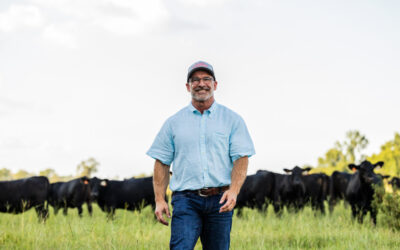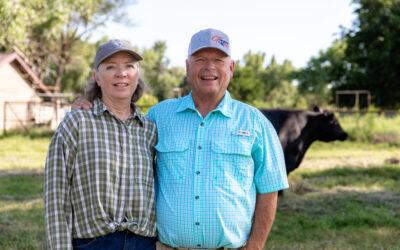
Adding, capturing calf value
March 17, 2011
Cattlemen may hear about the shrinking beef industry and wonder about their role in the future. They can take heart in the expanding high-quality end of the business, however.
Licensed partners of the Certified Angus Beef ® (CAB®) brand worldwide sell more than 2 million pounds of branded product per day, and supply has increased 92% in the past five years. That’s according to Mark McCully, CAB assistant vice president, supply.
Addressing producer-members of the Pittsylvania County Cattlemen’s in Chatham, Va., earlier this month, McCully said demand for CAB products grew along with supply, and that represents opportunity for producers.
Overall higher cattle prices and premiums for the best cattle are two results of strong demand, but producers can take steps to move a greater share of their calves into that premium category, he said.
Genetic selection tools available on registered Angus cattle, specifically EPDs (expected progeny differences) can help any herd make progress. “EPDs are used to compare animals within a breed but you should also pay attention to the average values of the breed,” McCully said. “For example, using a bull in the top half of the breed for Marbling EPD, or those above +0.40, is more in line with a genetic focus on the CAB brand.”
Given the genetic potential, cattlemen can see it realized through comprehensive herd health and nutrition programs and low-stress management, he added. “Then, find ways to get carcass data by working with organized state programs, your bull supplier or a CAB licensed feeding partner. Keep detailed records and use that data in sire selection and cowherd culling.”
To illustrate value differences, McCully shared three scenarios with 750-pound (lb.) feedlot calves. Groups one and two were both age-and-source verified, gained 3.5 lb. per day (ADG) with feed-to-gain (F:G) conversion of 6.1. After a theoretical 1% death loss, both groups finished at 1,325 lb.
The key difference was in carcass grading: Group 1 had 5% Prime, 40% CAB and 90% Choice or better along with 30% Yield Grade (YG) 1 or 2 and 15% YG 4. Group 2 was leaner with 40% YG 1 or 2 and just 5% YG 4, but no Prime, only 10% CAB and 50% Choice with 5% Standard.
Then there was Group 3, the calves without age-and-source verification, ADG at 2.9 lb., F:G at 7.0, apparently in poorer health with 4% death loss and finishing at 1,250 lb. They managed the same carcass results as Group 2, but came in $195 per head lower value than Group 1 under current market conditions.
McCully concluded by emphasizing the importance of marketing options to capture the value in “value-added” calves.
-
-
-
- Retain full or partial ownership of calves through the feedlot
- Direct marketing to feedlots with bonus options for carcass premiums
- Commingled sales of high-quality calves with other like-minded producers
- Calves backed by a resume that documents their profit potential
- Age-and-source verification with AngusSource®, which generally returns at least $25 per head.
-
-
You may also like
Healthier Soils and Stronger Herds
Effective land stewardship requires an understanding of how each decision affects forage growth, cattle performance and long-term stocking rates. When land is the foundation of the business, producers are more likely to invest time and resources into managing it intentionally.
Smitty’s Service on CAB Board
Lamb continues to find himself struck by just how far-reaching the Angus breed has become. The brand’s growing demand and rising prime carcasses left a strong impression. He hopes everyone recognizes the vital connection built between consumers and Angus producers. Humbled by the opportunity to serve, Lamb reflects on his time as chairman with gratitude.
Zybach Angus Receives Certified Angus Beef Progressive Partner Award
Steve Zybach’s vision for smaller Angus producers to get more value for their calves through feeder calf sales with value-added programs led him to be recognized as the 2025 CAB Progressive Partner.



